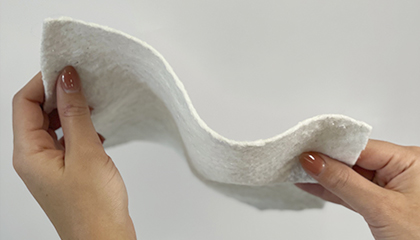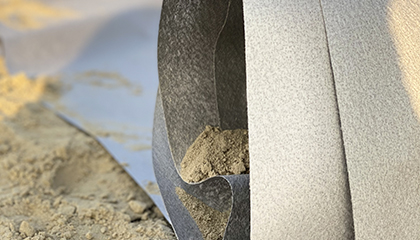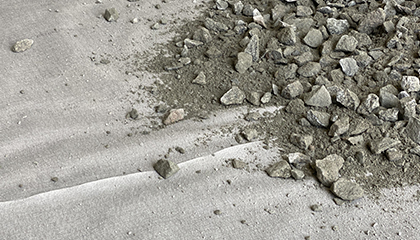The use of geotextiles has become a necessary step for use in modern construction: in the arrangement of landscapes, sports grounds, road construction, in the creation of hydraulic structures. Unlike other similar materials, geotextile is resistant to fungal infection and rotting, does not respond to moisture, which allows it to be used for many years. Geotextile made of polypropylene yarns or polyester has no expiration date in its physical parameters. In fact, it is an eternal material. As a result, it is possible to reduce the cost of updating the geotextile layer, thereby increasing the operational life of the object.
There are heat-bonded, heat-fixed and needle-punched geotextiles.What are the main functions performed by the whole geotextile as a whole?
separation
- reinforcement
- drainage
- filtering
It is very important to understand what the main purpose of the selected geotextile will be:If the main purpose of geotextile is drainage and filtration, we choose needle-punched geotextile
- If the main purpose is to reinforce the surface, we choose heat–treated geotextile
- If the main purpose is to be used in road construction, where strength is an important indicator, we choose thermally fixed geotextile
Consider each type of geotextile :Needle—punched geotextile is a non-woven fabric made of synthetic fibers bonded together mechanically.
Where is needle-punched geotextile used?Landscape design - for separating layers of soil-sand-crushed stone and protection from unwanted growth of roots and weeds

- Construction of hydraulic structures - protection of waterproofing membranes from mechanical damage
- Road construction - reinforcement of the roadbed and slopes near the road
- Drainage systems – to protect the foundation during construction and to remove excess moisture
- Construction of tunnels, railways, overpasses
- Laying paving slabs
Thermofixed geotextile is a non–woven material consisting of polyester threads. Geotextile is produced by heat treatment of polyester or polypropylene fibers. Thanks to additional heat treatment, high strength characteristics, filtration and drainage properties of geotextiles are ensured. Geotextile has increased resistance to pushing and stretching.
Where is thermofixed geotextile used?Strengthening of slopes, slopes and embankments in road construction - for separation, filtration and reinforcement as an auxiliary layer, prevents the collapse of slopes

- Road construction – to reduce the deformation of the roadway and the separation of layers of soil-sand-crushed stone
- Tunnel construction – for protection and drainage layer between rock and insulation coating
- Hydraulic engineering construction - to prevent water erosion of the soil and filtration under the coastal fortification
- Construction of sports grounds – for the arrangement of drainage systems
- Foundation construction – for groundwater drainage and separation of crushed stone-soil in order to avoid silting of the drainage pipe
Heat–treated geotextile is a non-woven material that is produced from synthetic fibers by the needle-punched method and is subjected to heat treatment. As a result of heat treatment, the fibers are sealed, withstands a heavy load on pushing and stretching, forming a durable layer. At the same time, the filtering abilities are preserved only in the transverse direction.
Where is heat-treated geotextile used?Separation of bulk materials soil-sand-crushed stone-screening

- Reinforcement of weak foundations
- Filtration in drainage systems
- Protection against soil erosion
- Construction of hydraulic structures
- The device of the inversion roof
- Construction of roads and railways
- Landscaping and landscape design
- Installation of drainage systems
- Clothing and footwear industry
- Furniture production

